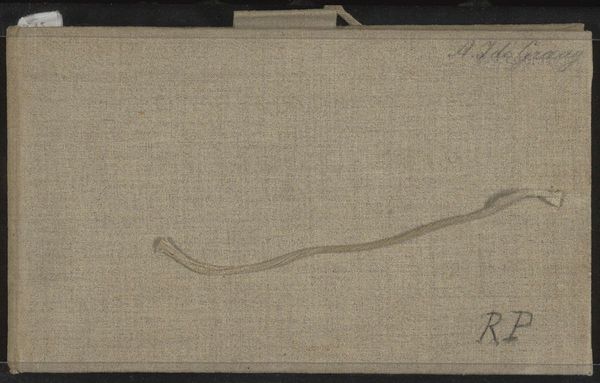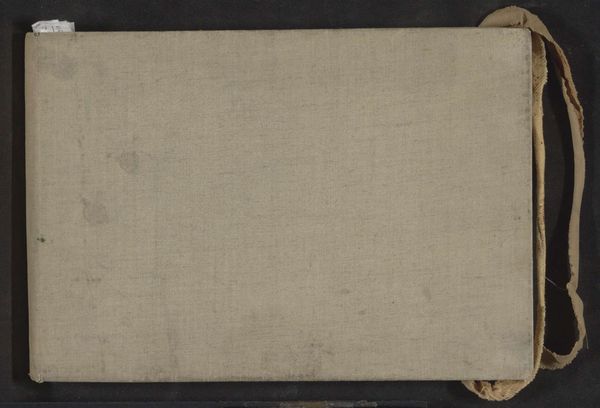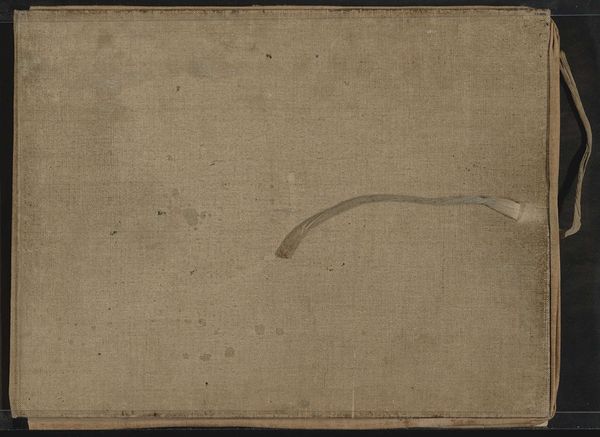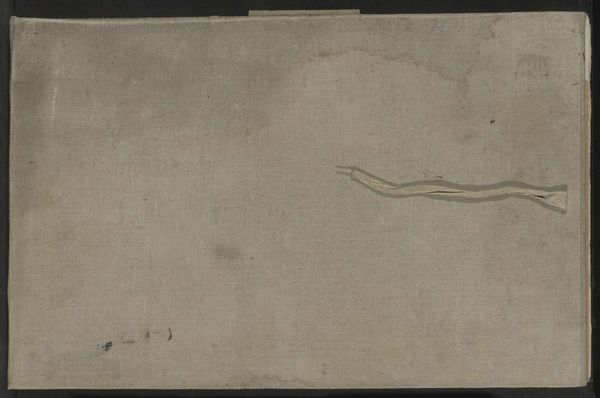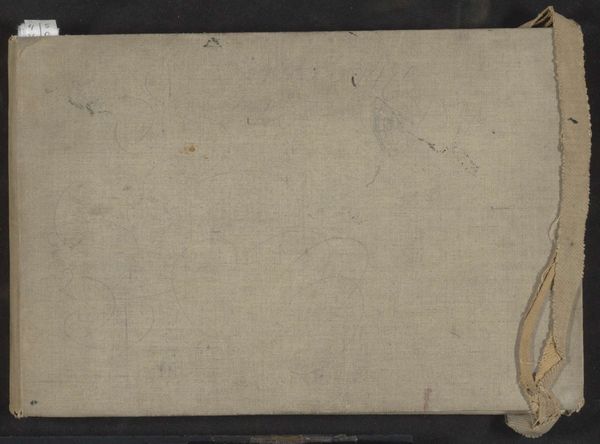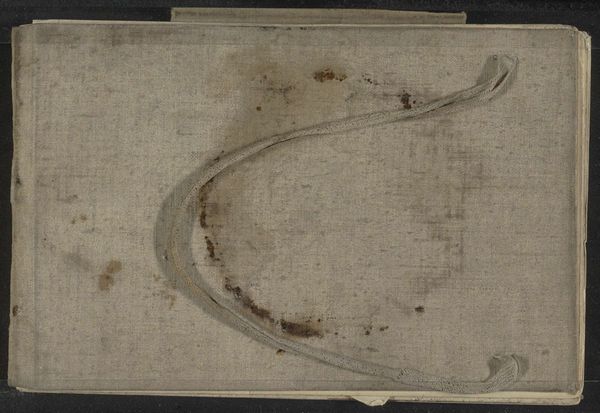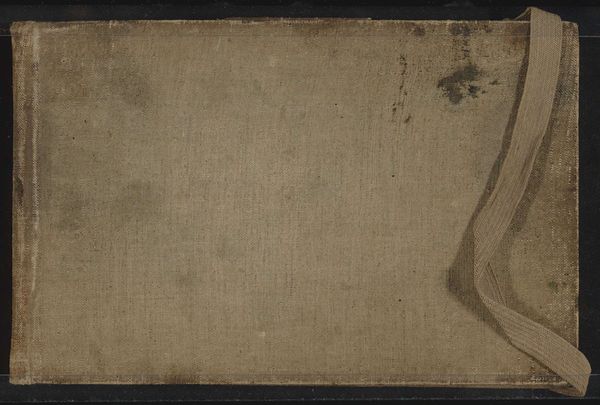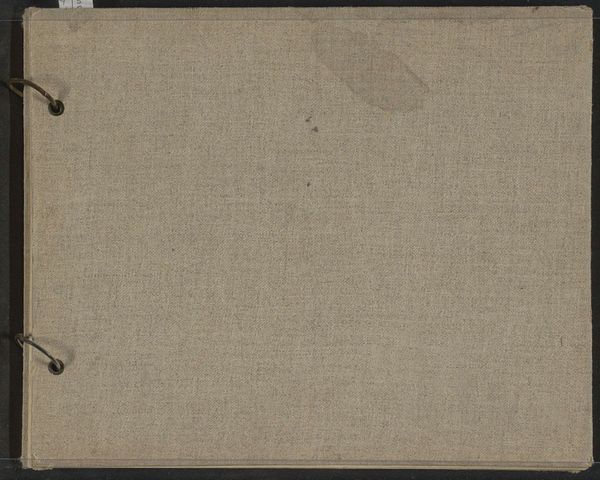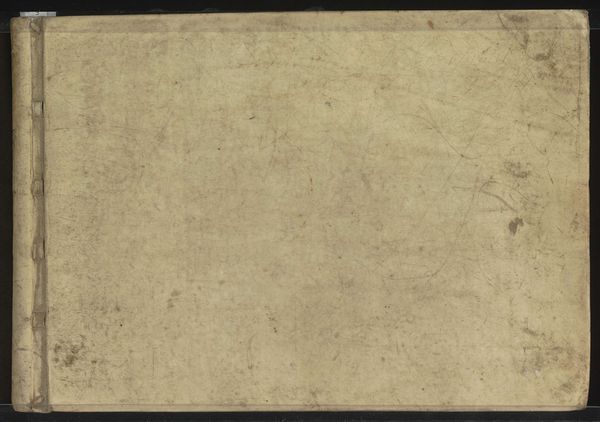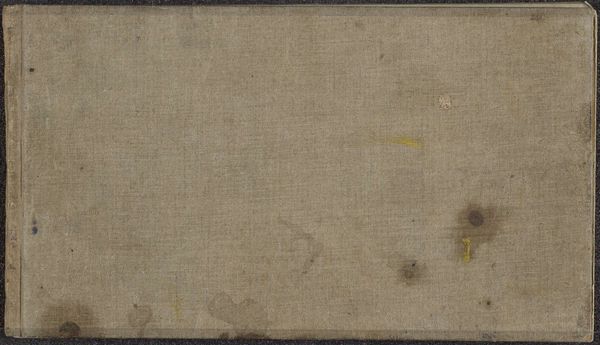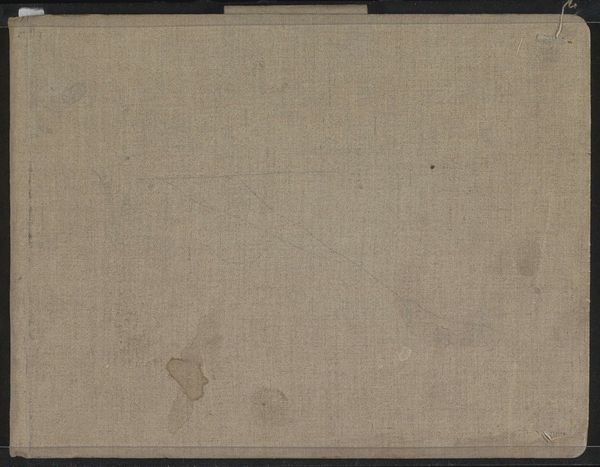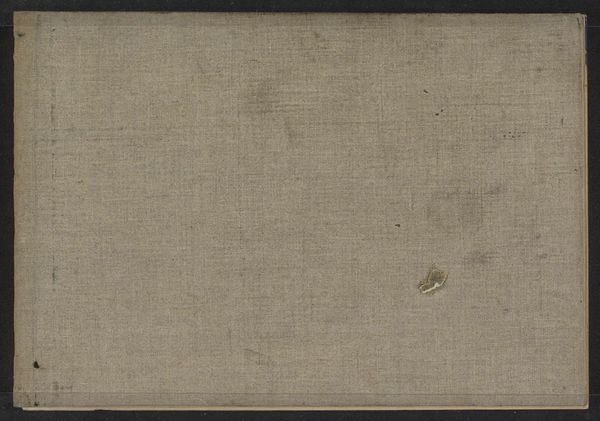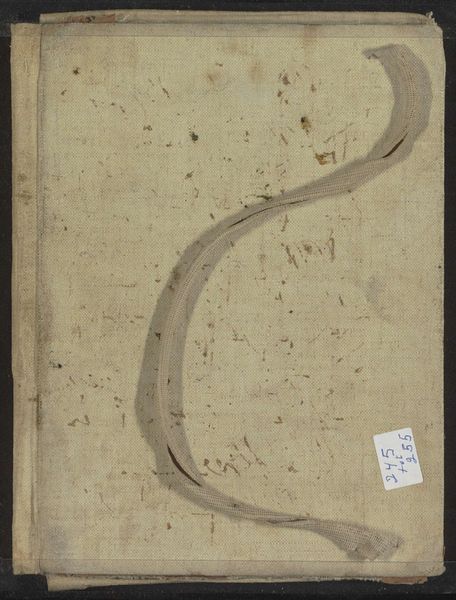
drawing, paper
#
portrait
#
drawing
#
impressionism
#
paper
#
watercolor
Dimensions: height 141 mm, width 218 mm, thickness 14 mm, width 427 mm
Copyright: Rijks Museum: Open Domain
Curator: Here in the Rijksmuseum, we’re looking at "Sketchbook with 37 Leaves" by Jozef Israëls, created sometime between 1834 and 1911. It's rendered primarily in drawing and watercolor on paper. The cover is quite interesting in itself, wouldn’t you agree? Editor: Absolutely. Before even delving into the contents, the cover whispers of age and countless journeys. The faded linen, the simple cord—they speak of intimacy, of an object meant for personal exploration and record. There’s something deeply compelling about its unadorned nature. Curator: For me, the sketchbook represents an artist's daily labor. Each page is a testament to Israëls' commitment to observation and skill development. It begs the questions: What paper types did he use? How were these readily available and affordable? Editor: It does hint at the tools of a trade. Looking at the watercolor, though, I immediately think of the emotional weight carried by landscapes in the 19th century. They weren't just depictions of scenery; they symbolized national identity, spiritual solace, and personal reflection. The sketches within are undoubtedly filled with those laden symbols. Curator: Good point! I would also look to the types of pigments Israëls employed; perhaps they can point towards the development of industry or artistic commerce at the time. Editor: Indeed. And it highlights how objects, especially those like sketchbooks, are palimpsests of ideas and values. We're not just seeing the material remains but glimpses into the past and present. It really underscores how art becomes imbued with layers of cultural meaning over time. Curator: I agree. The sketchbook reveals not only the artist’s hand, but also traces the historical and social conditions under which he lived and worked. Editor: Absolutely! It is a privilege to find symbols and metaphors embedded, which enriches my viewing experience so significantly. Curator: A fantastic springboard to examining art history and production processes.
Comments
No comments
Be the first to comment and join the conversation on the ultimate creative platform.
